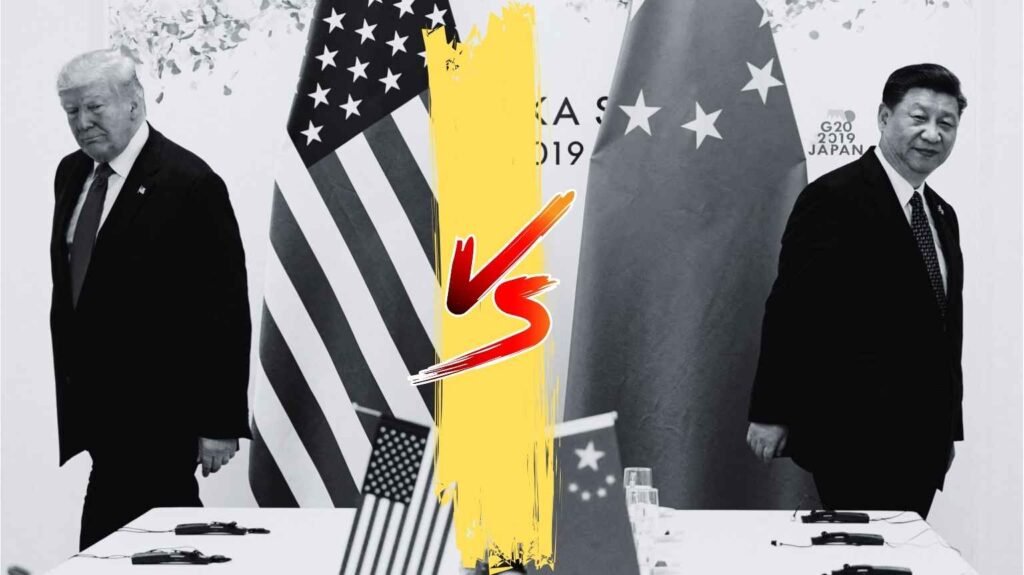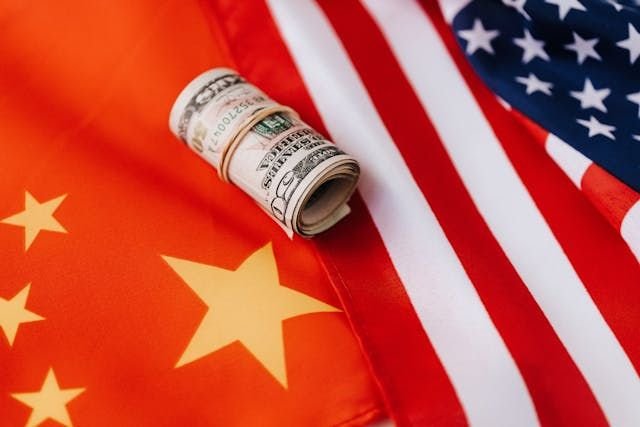
Are you keeping up with the latest economic chess moves on the global stage? The recent tariff policies implemented by the Trump administration might be creating unexpected ripple effects that extend far beyond America’s borders – and China appears ready to capitalize on the situation.
The Bold Tariff Strategy That’s Shaking Global Markets
Last Friday, the White House proudly announced what they described as a “courageous plan” to rebalance international trade relationships and restore American industrial capacity. The administration believes these aggressive tariff measures targeting numerous trading partners will help reverse decades of manufacturing decline attributed to globalization.
But is this strategy working as intended? The initial market reaction suggests otherwise:
- The S&P 500 plummeted approximately 10% in just two trading days
- This represents a staggering $5 trillion loss – equivalent to Brazil’s entire economic output for over two years
While Wall Street trembles, the rest of the world is rapidly adjusting their positions – often in ways that don’t align with Washington’s interests.
Traditional Allies Seeking New Paths
Many longtime U.S. partners aren’t simply accepting these new economic barriers. They’re actively pursuing alternative commercial routes to reduce American dependency:
- Canada has initiated discussions with the European Union to develop new partnerships
- Southeast Asian nations are increasing intra-regional trade
- Latin American countries, including Mexico (temporarily spared from tariffs), are creating alternatives to the American market
Perhaps most concerning for U.S. interests is the surprising pivot happening across the Pacific.
The Eastern Diplomatic Shift That’s Raising Eyebrows
Japan and South Korea – two of America’s oldest and most reliable Asian allies – are facing heavy tariffs (24% and 25% respectively). This economic pressure has pushed them toward an unexpected direction: dialogue with China.
While reports vary regarding the exact nature of these discussions, the mere fact that these nations are willing to engage politically with Beijing in response to Washington’s actions represents a profound shift that would have seemed unimaginable just weeks ago.
The three nations had already been exploring a potential trilateral free trade agreement, but now these conversations likely include strategies to counter American tariff measures.
“Instead of attempting to split the Sino-Russian alliance as Kissinger did in the 1970s, Trump’s actions may be creating a ‘reverse Truman’ effect – fracturing the very network of alliances the U.S. has built since World War II.”
Why Beijing Might Be Celebrating Despite Their Own Tariff Burden
Despite facing heavy tariffs themselves (reaching up to 70% in some sectors), China’s leadership appears convinced they’re emerging less damaged than their American counterparts.
The Global Times, the Communist Party’s state newspaper, has emphasized that Trump’s measures primarily harm the United States while celebrating their warming relations with Tokyo and Seoul – even suggesting an irreversible distancing from Washington might be underway.
History Shows China Capitalizes on Western Economic Weakness
Historically, China has seized opportunities during periods of Western economic vulnerability to advance its territorial ambitions. The 2008 financial crisis offers a telling example:
While the world struggled economically between 2009-2014, China:
- Claimed nearly the entire South China Sea
- Occupied Scarborough Shoal
- Built artificial islands with military infrastructure in the Spratlys
- Declared an air identification zone over disputed islands
- Tightened control over Hong Kong, resulting in thousands of arrests
All these moves occurred when Beijing perceived the West was too economically fragile to mount an effective response.

Trump’s First Term Actually Strengthened America’s Indo-Pacific Position
Ironically, during his first administration, Trump significantly bolstered America’s presence in the Indo-Pacific region:
- He fostered the Quad alliance with Japan, India, and Australia
- Encouraged rapprochement between Japan and South Korea
- Limited Chinese ambitions through strategic partnerships
These initiatives received bipartisan support and were so effective that the Biden administration maintained this strategic continuity despite ideological differences.
The Diverging Economic Philosophies
Like Trump, Chinese President Xi Jinping has never embraced the Western free trade model, viewing industrial strength as the foundation of national power. However, unlike Trump’s approach, Xi has methodically constructed an alternative:
- The “dual circulation” model integrates domestic production and consumption
- This strategy reduces external dependencies
- Current global turbulence suggests China’s approach may prove more prudent
America’s Strategic Path Forward
For the United States to effectively respond to this shifting landscape, it must adopt a balanced approach:
- Maintain a firm stance against Chinese provocations in Taiwan, the South China Sea, and other flashpoints
- Rebuild economic vitality through strategic international trade
- Apply selective tariffs to protect national security interests in key sectors
- Avoid generalized tariffs based solely on trade deficits that alienate valuable allies
The Hard Truth About Global Influence
The harsh reality is that American weakness creates space for Chinese expansion. As currently conceived, Trump’s broad tariff policies may inadvertently be opening the door to precisely that scenario in the Indo-Pacific region.
While protecting American industry is a noble goal, we must consider whether these specific economic measures are strengthening our global position or unintentionally playing into the hands of strategic competitors.
What are your thoughts on these tariff policies? Do you believe they’ll ultimately strengthen America’s position or create unintended consequences? Share your perspective in the comments below!



